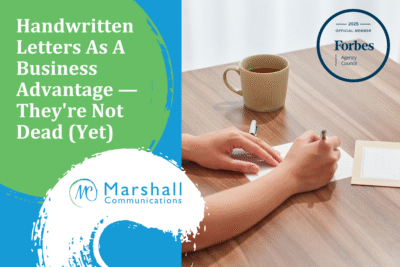Public relations and marketing—what’s the difference?
To the untrained eye, it can be difficult to differentiate between something like a social media post and a news story. It can be similarly challenging to tell the difference between a public relations professional and a marketer—the varied job requirements, the unique value-adds and the end goals of each job.
Let’s explore the difference, and then I’ll tell you what really matters most.
Marketing: Setting The Stage For Sales
Marketing is the culmination of all activities that pave the way for sales to occur (the actual transaction). It essentially tees up the customer for a salesperson to close the deal. Marketing is all about the four P’s: product, price, place and promotion.
For example, a marketing person who works for a pharmaceutical company may promote the health benefits of a certain drug on social media, whereas the sales representative ensures that hospitals stock up on the drug and introduce it to patients. That marketer will use social media as a form of public education, explaining how the drug can help reduce pain or mitigate symptoms (while also naming potential side effects). For a clothing company, a marketer may use Instagram posts to establish their brand to potential customers—using terms like “trendy” or “sleek.” But, it is ultimately up to the customer to buy the clothing product, and it is up to a salesperson in the store to close that deal.
Marketers can engage customers and clients (prospects and current ones), raising the profile of a brand so that it attracts the right people—those most likely to make a purchase. For instance, the marketing person at a new furniture store may identify people who are fans of “modern” branding, building up followers on social media and encouraging those people to shop for modern furniture in person.
Public Relations: All About Earned Media
PR practitioners are still well-versed in branding and their work can also help salespeople close deals, but we work in different domains. Whereas a marketer will research potential buyers, a PR person will research potential media outlets that may be interested in covering a product. It is the PR person’s job to “pitch” a reporter on covering that product—let’s say, a new clothing line—and reaching prospective customers through “earned media.”
Earned media could refer to a news story or an op-ed column (just two examples) that a PR pitch secures, as long as it is unpaid. “Paid media” may refer to a sponsored Instagram post or a cable news advertisement, but earned media is generated based on the merits of a pitch. In this way, a PR practitioner convinces a media contact, such as a reporter, to cover a newsworthy topic because it is inherently interesting to their publication’s readers.
Some people think that earned media is a thing of the past, given the rise of social media, but that simply isn’t true. Earned media can be even more valuable since it brings a unique sense of third-party validation—and, by extension, trust. It’s one thing for a company to promote a new product, but it’s another one entirely for the New York Times to sing that product’s praises. Readers consider that much more credible since the company isn’t just paying for promotion through advertising.
Integrated Marketing: The Best Of Both Worlds
In the end, social media and earned media actually complement each other. For example, if a pharmaceutical company’s PR department were to land a Times story about a new drug that is favorable to the business, that story could then be promoted on social media to reach different audiences. That social media post is much more valuable with a Times article link—or “hit,” as we call it—than without. The marketing team can take the news story and publicize it on various channels, in addition to the salesperson who can leverage the Times’ brand in their own pitch materials.
This is called “integrated marketing,” where publicists, marketers and others can work together to strengthen a brand in unison. But PR is the ultimate influencer: It is the most difficult to nail, but it is also the most legitimate and credible because you’re pitching objective media contacts who are independent of the people making the pitch.
Of course, the value of PR can sometimes be difficult to quantify because it doesn’t necessarily close a sale directly. People in my industry used to rely on “advertising equivalency,” which calculates how much advertising space would cost in place of a given news story, but that is not foolproof. Whatever the case may be, it is undoubtedly valuable to secure a national story for your company or client. The brand benefits.
So, what’s more important—PR or marketing? They are both crucial, but what matters most is that they are integrated. The most successful approach is to use both, with one reinforcing the other and vice versa.
This article originally appeared on the Forbes Agency Council CommunityVoice in May 2024.












